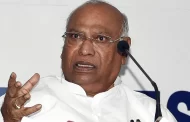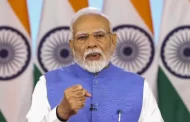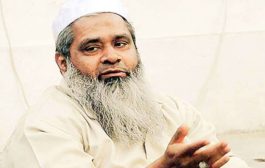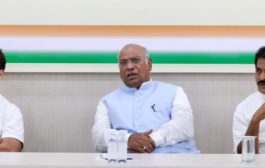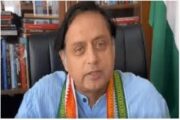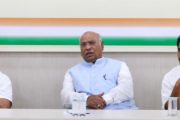The spectre of a hung assembly in Karnataka, with the BJP notches away from a clear majority, has set off a familiar constitutional conundrum: who should the governor invite to form the next government?
In separate meetings with Governor Vajubhai Vala, the BJP and Janata Dal Secular (JD-S)-Congress’ post-poll alliance have both staked claim . The state has 224 seats of which polls were held to 222. The BJP won 104; the Congress, 78, and the JD(S), 38. The Congress-JD(S) also claims the support of two independents. That gives the combine 118.
Recent examples of Goa, Manipur and Meghalaya , where the governor chose to ignore the single-largest party, were then criticised by the Congress, which is now citing them as precedent.
Normatively speaking, the brief for the governor is simple, says Sanjay Hedge, senior Supreme Court lawyer who is an expert on constitutional matters: “He or she (the governor) has to invite the leader of a party or an alliance who in his or her opinion is likely to command the confidence of the House.”
Analysts say a multitude of scenarios and possibilities that have emerged after the Karnataka results make it a tough call. “If the BJP were to be invited and manages to break the JD(S), it has to steer clear of falling foul of the anti-defection law. Whatever decision the Governor takes, whether calling the single largest party or another alliance, he mustn’t take any unnecessarily step that could encourage or precipitate horse trading,” said GC Malhotra, a former secretary-general of the Lok Sabha.
Malhotra said since the possibilities are many at this stage, the Governor would likely wait and watch. “JD(S) is purportedly with the Congress, but what if the JD(S) gets lured by the BJP and gets the deputy chief minister’s post and ministerial berths at the Centre?” The JD(S) has two Lok Sabha members.
The governor however doesn’t have indefinite time to take a call. “All this has been well synthesized in the SR Bommai judgement of the Supreme Court. The Governor has to act within a reasonable time-frame and not sit on a decision indefinitely,” Hedge said
The Constitution itself says little on who the invite should go out to when no party gets a majority. Article 75 merely states that the “Prime Minister shall be appointed by the President”. Likewise, Article 164 states that the “chief Minister shall be appointed by the Governor”.
The 1983 Sarkaria Commission, the first panel to review Centre-state relations, expressly recommends inviting the single largest party first to avoid any controversy. “This has been upheld by the Supreme Court in one of its judgements,” Malhotra said.
The landmark Sarkaria Commission’s report and later the M.M. Punchi Commission’s report on Centre-State relations are the only instances where detailed procedures are laid down on the appointment of chief minister in case no party has majority. The Punchi Commission reiterates the Sarkaria Commission’s principle of calling the single largest party. However, both these reports are recommendatory in nature.
Clause 4.11.03 of the Sarkaria Commission states the Governor should be guided by the following principles “in choosing a chief minister”: “(i) the party or combination of parties which commands the widest support in the Legislative Assembly should be called; (ii) The Governor’s task is to see that a Government is formed and not to try to form a Government which will pursue policies which he approves. Thus, if there is a single party having an absolute majority in the Assembly, the leader of the party should automatically be asked to become the Chief Minister.”
Hedge says, even so, the Governor “must be careful to avoid calling a single largest party which simply has no hope of passing the test on the floor of the House”.
Three precedents bring out the pitfalls of either blindly inviting the single largest party or an alliance. In 1989, the Congress’s Rajiv Gandhi chose not to form the government despite being invited to because he wasn’t confident of the numbers. Then, president Shankar Dayal Sharma invited the Atal Bihari Vajpayee-led BJP in May 1996 to form the government. It collapsed after 13 days.
Former president KR Narayanan set a precedent when he insisted on clear written letters of support from Atal Bihari Vajpayee’s allies in 1998. “It was Narayanan who introduced this new element (letters of support),” Satya Narayan Sahu, his officer on special duty told HT. Narayanan’s autobiography ‘My Presidential Years’ recalls these events.
The governor ultimately ought to go by discretion, but convention and precedence are important touchstones, analysts say.
Source:HT



